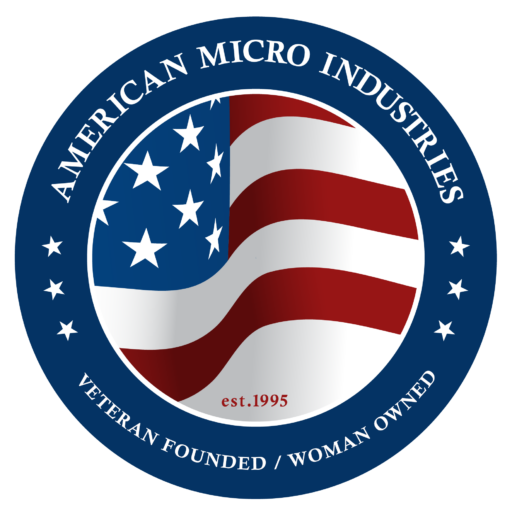








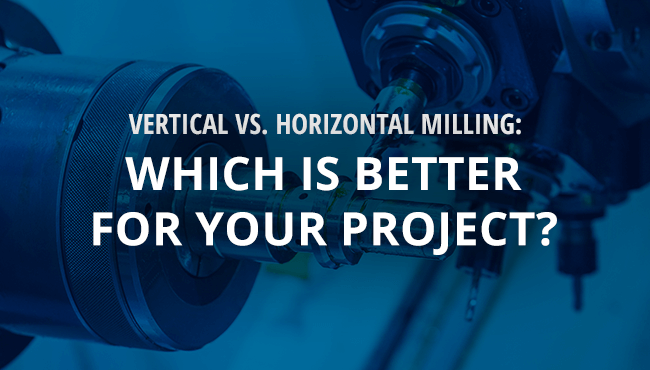

You can use a milling machine to cut and produce the specific parts or components you need for your project. Rather than add materials through a process known as additive manufacturing — which is what a 3D printer does — a CNC milling machine helps you achieve your desired look or function by cutting away at excess materials, through a process called subtractive manufacturing.
Several different types of milling machines can help you complete your next project. Two of those types are vertical mills and horizontal mills. Though they are different, both vertical and horizontal mills can work for a range of industries. By understanding which one is better for your business or project, you can minimize the risk of costly errors and equip yourself with the best tools possible to get the job done.
Read on to learn more about the different functions of horizontal and vertical milling machines, how to choose the best one for your project and when to consider using a custom manufacturing company instead.
Learn More About Our CNC Machining Services
The primary difference between vertical and horizontal milling machines is how the spindle axis moves — from side to side or up and down. Both of these machines have their merits, and the choice between the two often comes down to the specific needs of your project, your operating budget and the sort of timeline you are working with. It is worth noting that the machine you decide to use doesn’t necessarily limit the types of projects you can complete. In many cases, you can use either a vertical or horizontal milling machine for your project-related tasks, as long as you know the correct operating techniques or add-on parts required.
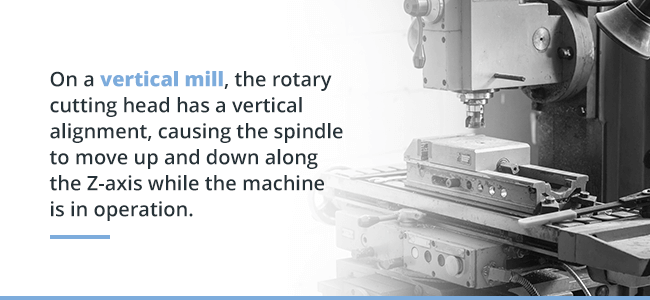

On a vertical mill, the rotary cutting head has a vertical alignment, causing the spindle to move up and down along the Z-axis while the machine is in operation. As the spindle moves, the cutters work to remove material as the rest of the machine moves and shifts along the X-axis and Y-axis to continuously position the object for further cutting. There are two types of vertical mills — turret machines and bed machines. The table on a turret milling machine can move both left and right and up and down, while the spindle remains stationary. This quality makes them ideal for a variety of applications. The table on a bed milling machine only moves horizontally, perpendicular to the axis, while the spindle runs parallel to the axis.
What is vertical milling used for? Standard applications for a vertical milling machine include:
Many industries rely on vertical milling machines for their various projects. Because vertical machines are versatile and highly accurate, they have several advantages.
Because they are easy to use and do not require as significant of an initial investment as horizontal milling machines, vertical mills can be the perfect choice for someone new to milling or a business that is just starting.
Several advantages come with using a vertical milling machine, but always keep your project in mind. With a vertical mill, you may find it more challenging to handle some pieces because they often have lower-horsepower motors than horizontal milling machines. Compared to horizontal mill machines, they do not offer as fast of an output rate. Additionally, these machines often rely on smaller cutting tools than other milling machines.
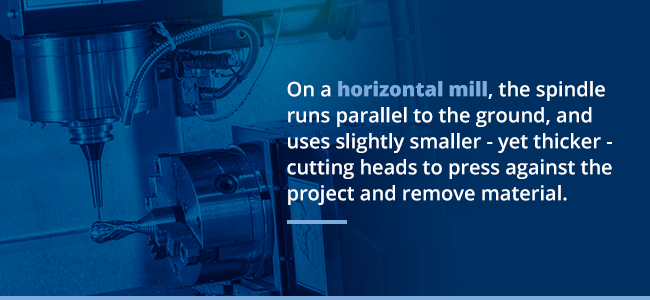

What is a horizontal CNC machine? On a horizontal mill, the spindle runs parallel to the ground, and uses slightly smaller — yet thicker — cutting heads to press against the project and remove material. Unlike vertical milling machines, you do not have a direct line of visibility as the machine cuts. Horizontal milling machines with universal tables can help you cut at various angles.
Horizontal mills are suitable for projects with needs such as:
Although they’re not as common, horizontal milling machines can be just as useful as vertical ones, depending on your needs. Some benefits of using a horizontal milling machine include the following.
Because they are faster and more rugged than vertical mills, horizontal milling machines are an ideal choice for businesses or operators that need to produce a lot of cuts each day.
Although horizontal machines have their advantages, one possible drawback is the cost. Due to the precise nature of the work you complete on these machines, they tend to be more expensive than vertical ones. However, if you regularly require a high level of output for the same type of project, the investment may soon pay for itself.
Another factor worth considering is that these milling machines are less common than vertical mills, so finding parts or skilled laborers may be more challenging if needed. A horizontal milling machine will also take up more space in your shop than a vertical machine will. If you have limited floor space, but still require the speed and physical capability of a horizontal machine, consider working with an outside parts manufacturer.
Both vertical and horizontal milling machines are compatible with CNC technology, which means you can input data into a computer-based software program to create your finished project. CNC milling machines also let you create identical replicated cuts, making them a very efficient tool. Due to the level of control, accuracy and precision it provides, CNC milling machinery is ideal for the medical, marine, aerospace, transportation, electronics, oil and gas and military and defense industries. When paired with CNC technology, your vertical or horizontal milling machine will help you save time and produce high-quality products.
Are vertical or horizontal milling machines better? It comes down to a few different factors, including the type of milling you require and your budget.
When you compare horizontal and vertical milling machines, your final decision should come down to the size and shape of the materials you use, as well as the types of projects you complete and your time frame for completing them. You should also consider how much you can afford in comparison to those factors.
As time goes on, you might evolve from one type of machine to another. For example, many people start with a vertical milling machine because of the small learning curve and lack of available floor space, but eventually add a horizontal mill as their operations grow. Alternatively, if you choose a horizontal mill for its ability to handle heavier materials, you may phase down to a vertical milling machine if your projects become smaller-scale or use lighter materials.
Vertical milling machines are often a smaller initial investment than horizontal milling machines, making them ideal for those operating under a tight budget. However, every project is different — what is affordable to complete on one machine might be different on another, depending on the type of cutting tool you are using or what kind of turnaround time you require. Always analyze your current and future projects, as well as the type and weight of materials you expect your milling machine to cut through. Although a vertical machine might be a more affordable initial investment, make sure you are not using materials that are too heavy or thick, or you may end up spending those savings on repairs or replacements. When it comes to your budget, don’t forget to also factor in the cost of the cutting tools you will need to complete your project.
Something to keep in mind when it comes to project costs is the learning curve associated with each machine. Vertical mills are prevalent across the industry, so it is usually easier to find a machinist with experience operating and troubleshooting them. If you choose a machine that you are unfamiliar with or do not seek outside training, this could result in wasted materials or botched projects that can add up over time. It can also be dangerous if used by an untrained professional. One of the best ways to avoid this issue is to work with an experienced manufacturer with the knowledge and tools necessary to help you finish your project efficiently and on time.
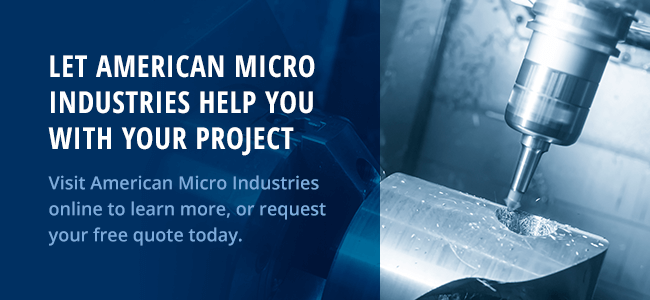

If you need custom, made-to-order parts for your business or project, American Micro Industries can help. With CNC machine milling, we can produce your custom part to meet your exact specifications, with particular attention placed on the intricate details and quality of the final product. By entrusting us with your project, you eliminate the potentially hazardous and costly learning curve associated with in-house milling, and you can reallocate that time and money elsewhere in your business. Because we have years of industry experience across several sectors, you can expect a quick turnaround time.
In addition to CNC machining services, we are also happy to provide:
At American Micro Industries, our mission is to be a full-service partner for you and your business. That’s why we also offer a variety of secondary operation services to help you save time and money and improve the overall quality of your operations. Secondary operation services can include mechanical assembly, shielding, engraving, printing, packaging or direct shipping from our facility.
Visit American Micro Industries online to learn more, or request your free quote today.